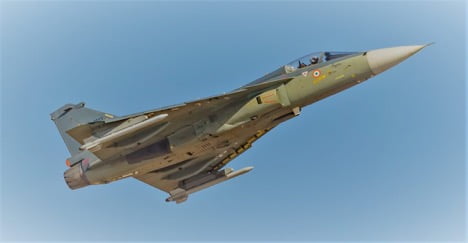By Jimmy Bhatia
New Delhi: After hard-nosed price negotiations spreading into better parts of two years, HAL has finally agreed to supply Indian Air Force (IAF) with 83 Tejas LCA Mk IA at a cost of Rs 39,000 crore ($5.6 billion approximately).
Earlier, HAL had demanded a staggering Rs 56, 500 crore ($8.1 billion) as the overall cost for the same project. The defence ministry and IAF were initially taken aback at the “exorbitant price” being demanded by HAL to produce the 83 Tejas Mk-1A jets along with the maintenance and infrastructure package.
It may be recalled that in November 2016, the Defence acquisition Council (DAC) had approved the procurement of 83 Tejas Mk-IA jets at a cost of Rs 49,797 crore, but HAL had responded with a quote of around Rs 56,500 crore. This led to a detailed analysis on how the pricing was being done. It was revealed that HAL was also charging profit on imported components. By carrying out item by item scrutiny cost was brought down. The IAF also cut down some of its support requirements to cut costs.
With the contract price now settled at Rs 39,000 crore, the procurement file is being sent to the Cabinet Committee on Security for the final nod. It should be cleared before the end of the current fiscal year, March 31.
In 2016, while offering the Tejas Mk-IA with some much needed improvements, such as, an AESA (active electronically scanned array) radar to replace existing mechanically-steered radar, air-to-air refuelling, long-range BVR (beyond visual range) missiles and advanced electronic warfare to jam enemy radars and missiles, HAL had promised to start inducting the Mk- IA into the IAF by 2019. HAL had also assured IAF that it would improve the maintainability aspects of the jet to ensure better operational availability on the flight-line. However, three precious years have been lost in the bureaucratic quagmire of price negotiations.
Now, once the contract is inked, HAL promises to begin deliveries of the Mark- 1A jets in three years,” said a source. It is hoped that there will be no further slippages in the timelines, as the IAF down to less than 30 fighter squadrons, had pinned its hopes on timely Tejas induction as one of the three pillars for new fighter acquisitions – the other two being induction of Rafale fighters and going ahead with MMRCA-II programme for the acquisition of 114 new jets – to stem any further slide down in its fighter squadrons’ strength and gradually build the strength to 42 jet fighter squadrons required for the requisite deterrence against a dual threat from Pakistan and China.
Notably, the first four Rafale fighters will touch down at Ambala airbase only in May this year, with the remaining 32 following in batches by April 2022 under the Rs 59,000 crore deal inked with France in September 2016.
On the other hand, the perennially slow production rate of the home-grown Tejas jets by HAL, much like its protracted development saga, remains a major concern for the IAF. For example, IAF’s No. 45 ‘Flying Daggers’ squadron at Sulur has till now inducted only 16 of the original – with the earmarked second squadron No. 18 ‘Flying Bullets’ yet to receive anything – out of the original 40 Tejas Mark-1 fighters, which were all slated for delivery by December 2016 under two contracts worth Rs 8,802 crore inked earlier.
The flight testing for Tejas Mark-1A will hopefully be completed by 2022, but the induction of all Mk Is/Mk-IAs would not be complete before 2025/26. After these 123 fighters, the IAF is also looking to induct 170 Tejas Mark-2 or the MWF (medium weight fighters) with more powerful engines and advanced avionics,” another source said.
But the Tejas Mark-2 and the indigenous stealth fifth generation fighter aircraft called the advanced medium combat aircraft (AMCA) are not likely to be available before the IAF celebrates its centenary.
This article was first published by our partner India Strategic on February 17, 2020.


